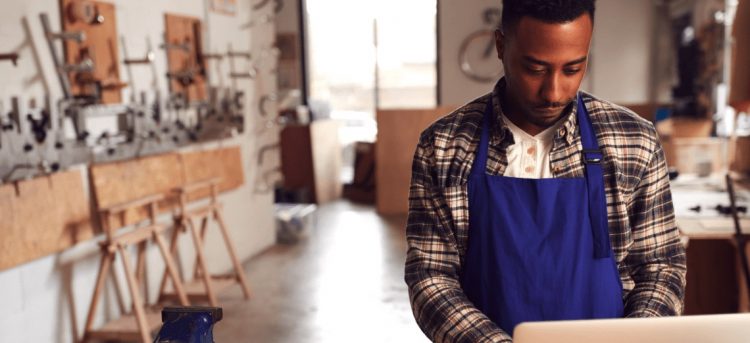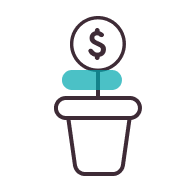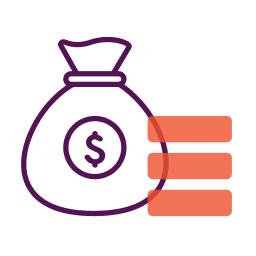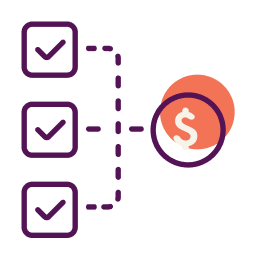You’ve gotten your PPP loan, spent it properly, and hopefully qualify for full forgiveness. Congratulations!
What’s next?
Here are six steps you can take now, after your PPP loan, to help ensure your business continues on the road to recovery.
1. Get a Grip On Your Bookkeeping
If applying for PPP was challenging because your bookkeeping wasn’t up to date, now is the time to fix that. You’ll either want to develop a system so you (or an employee) keeps your books up to date, or you’ll want to work with a bookkeeper or accounting professional who will do it for you. Either way, your bookkeeping shouldn’t be something that waits until tax time. At a minimum, records should be entered and accounts reconciled each month if you just can’t tackle it daily or weekly (which is what I recommend).
2. Make Sure You’re Covered
Every small business needs insurance coverage from workers’ compensation, to general liability, and maybe even a commercial auto policy. Depending on the nature of your business, the industry you’re in, and a number of other factors, it is probably a good time to evaluate your business insurance needs to make sure you’ve got the coverage you need.
Visit our partner Mylo to learn more
3. Keep Business and Personal Finances Separate
A lot of businesses struggled with their PPP loan application because it wasn’t clear what was a personal expense and what was a business expense. It’s simply not a good idea to co-mingle funds. If you haven’t already, establish a business bank account. You should know, there are many small business lenders that won’t even consider your small business loan application if you don’t have a separate business account.
4. After Your PPP Loan, Update Your Business Plan
Your business plan should be a living document, updated when conditions change. Many business owners find that they need to overhaul their business plan to adapt to new economic realities. You may find your business landscape is shifting quickly; your business plan must adapt.
If you’re struggling to change your business approach, take advantage of free help from SBA resource partners such as Small Business Development Centers (SBDCs) or SCORE. Both provide free mentoring and other resources to small business owners.
5. Consider a Second Draw PPP Loan
If you didn’t get a second PPP loan, you may still be able to apply for one. The rules for Second Draw PPP loans are a little different than first draw loans. You’ll need to demonstrate at least a 25% reduction in revenues from one quarter of 2020 compared to 2019 (or year over year). If you qualify, though, you may get a second round of funding that can also be forgivable.
Business owners who are self-employed may find they qualify for more funding the second time around, because they can now calculate their loan amount based on gross income rather than net profit. And businesses with a NAICS code starting in 72 (such as restaurants or hospitality businesses) may get 3.5 times average monthly payroll, instead of 2.5 times average monthly payroll as in the first round.
6. Line Up a Line of Credit
Many small business owners are still struggling with cash flow. Even those with healthy revenues may find their customers are paying more slowly. When businesses can’t collect from other businesses, it can create a domino effect that impacts suppliers and vendors.
A line of credit can smooth out cash flow while giving you some peace of mind. You’ll only pay interest on your outstanding balance. That means you won’t have to borrow until you need to. The best time to get a line of credit is before you urgently need it.
7. Get a Business Credit Card
A business credit card offers a line of credit that’s available when you need it. Even if you pay your balance in full each month, you’ll have extra time to pay for items you charge, depending on when you make the purchase. And if you do need to take advantage of the line of credit your card offers, your interest rate may be lower than other types of fast financing.
Finally, many cards offer lucrative rewards including cash back or points that can be used for travel. (We will be traveling again at some point!)
8. Consider an EIDL Loan
If your business is still struggling, an Economic Injury Disaster Loan (EIDL) may provide low-cost, critical financing. Your application will be evaluated to determine “economic injury,” so this SBA loan is not for businesses that haven’t been affected by the pandemic. The SBA recently raised the limit for EIDLs due to the COVID-19 crisis from $150,000 to $500,000. The interest rate is 3.75% for 30 years. The SBA requires acceptable personal credit and collateral is required for loans above $25,000.
This article was originally written on April 2, 2021 and updated on May 17, 2021.




Thank uforinfo